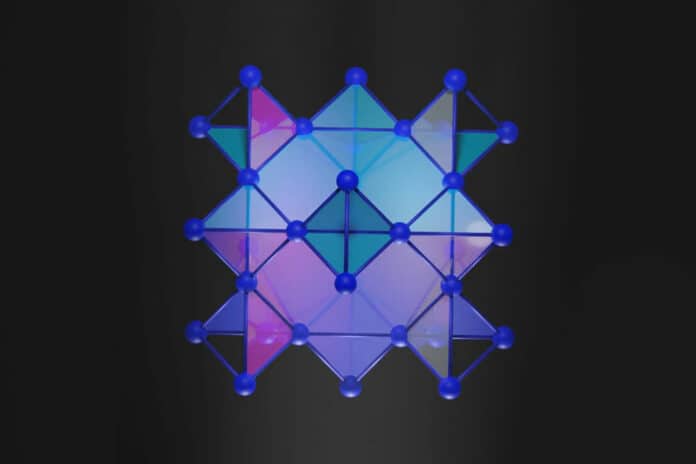Trapped electrons can settle into the same energy state and behave as one. This collective, zombie-like state is known as an electronic ‘flat band.’
According to scientists, electrons in this state can feel the quantum effects of other electrons and act in coordinated, quantum ways. In such cases, exotic behavior such as superconductivity and unique forms of magnetism may emerge.
Now, for the first time, physicists at MIT have successfully trapped electrons in a pure crystal. They achieved an electronic flat band in a 3D crystal.
Physicists used chemical manipulation to show they could transform the crystal into a superconductor. Because of the crystal’s atomic geometry- which resembles the woven patterns in “kagome,” electrons were “caged” and settled into the same energy band.
The study offers a new way for scientists to explore rare electronic states in three-dimensional materials. One day, these materials may be tuned for quicker, more intelligent electronic devices, quantum bits for supercomputing, and ultra-efficient power lines.
Study author Joseph Checkelsky, associate professor of physics, said, “Now that we know we can make a flat band from this geometry, we have a big motivation to study other structures that might have other new physics that could be a platform for new technologies.”
In particular, scientists synthesized a pyrochlore crystal in the lab. They put certain elements together- calcium and nickel — melt them at very high temperatures, cool them down, and the atoms will arrange into this crystalline, kagome-like configuration.
The next step was to determine whether or not each electron in the crystal belonged to the same flat band of energy by measuring its energy. Scientists usually use photoemission studies when they shine a single photon of light onto a sample, causing the model to release a single electron. A detector can accurately measure the energy of that single electron.
Scientists have verified flat-band states in a variety of 2D materials using photoemission. Due to their two-dimensional, physically flat character, these materials are relatively simple to measure with a typical laser light. That work is more difficult with 3D materials, though.
Associate Professor of physics Riccardo Comin said, “For this experiment, you typically require a very flat surface. But if you look at the surface of these 3D materials, they are like the Rocky Mountains, with a very corrugated landscape. Experiments on these materials are very challenging, which is why no one has demonstrated that they host trapped electrons.”
The scientists overcame this obstacle by using angle-resolved photoemission spectroscopy (ARPES), an ultrafocused light beam that can measure individual electron energies at specific spots over an uneven 3D surface.
In just thirty minutes, the scientists used ARPES to quantify the energy of thousands of electrons throughout a synthetic crystal sample. The flat-band state of the 3D material was confirmed when they discovered that the majority of the electrons in the crystal displayed the same energy.
Scientists then synthesized the same crystal geometry with atoms of rhodium and ruthenium to determine if they could manipulate the coordinated electrons into some exotic electronic state. According to their calculations, the chemical exchange should cause the electrons’ flat band to shift to zero energy, which is the state that naturally results in superconductivity.
Scientists discovered that the electrons in the newly created crystal displayed a flat band at superconducting states when they synthesized it using a slightly different set of components in the same kagome-like 3D shape.
Comin said, “This presents a new paradigm to think about how to find new and interesting quantum materials. We showed that, with this special ingredient of this atomic arrangement that can trap electrons, we always find these flat bands. It’s not just a lucky strike. From this point on, the challenge is to optimize to achieve the promise of flat-band materials, potentially to sustain superconductivity at higher temperatures.”
Journal Reference:
- Wakefield, J.P., Kang, M., Neves, P.M. et al. Three-dimensional flat bands in pyrochlore metal CaNi2. Nature 623, 301–306 (2023). DOI: 10.1038/s41586-023-06640-1
